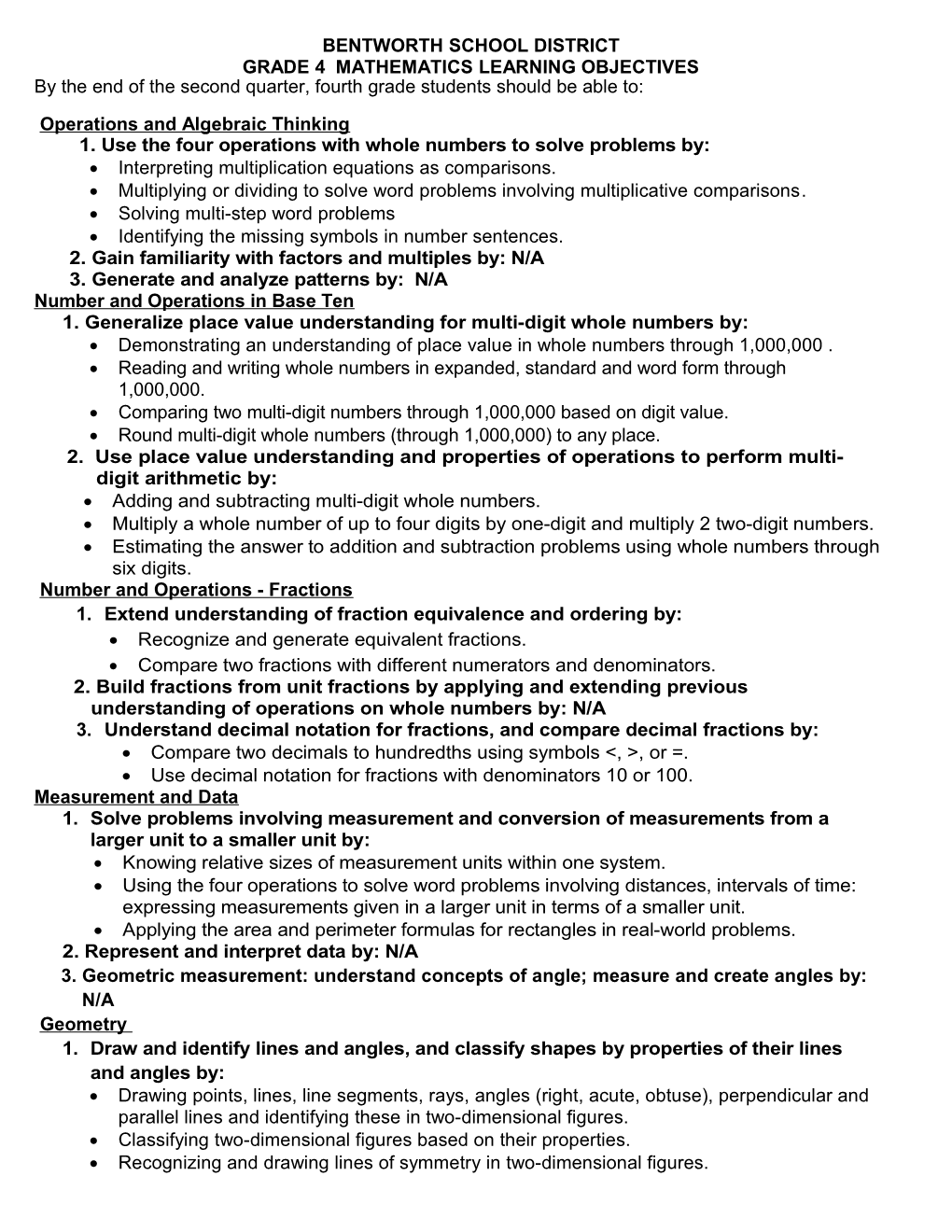BENTWORTH SCHOOL DISTRICT
GRADE 4 MATHEMATICS LEARNING OBJECTIVES
By the end of the second quarter, fourth grade students should be able to:
Operations and Algebraic Thinking
1.Use the four operations with whole numbers to solve problems by:
- Interpreting multiplication equations as comparisons.
- Multiplying or dividing to solve word problems involving multiplicative comparisons.
- Solving multi-step word problems
- Identifying the missing symbols in number sentences.
2.Gain familiarity with factors and multiples by: N/A
3.Generate and analyze patterns by: N/A
Number and Operations in Base Ten
1.Generalize place value understanding for multi-digit whole numbers by:
- Demonstrating an understanding of place value in whole numbers through 1,000,000 .
- Reading and writing whole numbers in expanded, standard and word form through 1,000,000.
- Comparing two multi-digit numbers through 1,000,000 based on digit value.
- Round multi-digit whole numbers (through 1,000,000) to any place.
2. Use place value understanding and properties of operations to perform multi-
digit arithmetic by:
- Adding and subtracting multi-digit whole numbers.
- Multiply a whole number of up to four digits by one-digit and multiply 2 two-digit numbers.
- Estimating the answer to addition and subtraction problems using whole numbers through six digits.
Number and Operations - Fractions
- Extend understanding of fraction equivalence and ordering by:
- Recognize and generate equivalent fractions.
- Compare two fractions with different numerators and denominators.
2.Build fractions from unit fractions by applying and extending previous
understanding of operations on whole numbers by: N/A
- Understand decimal notation for fractions, and compare decimal fractions by:
- Compare two decimals to hundredths using symbols <, >, or =.
- Use decimal notation for fractions with denominators 10 or 100.
Measurement and Data
- Solve problems involving measurement and conversion of measurements from a
larger unit to a smaller unit by:
- Knowing relative sizes of measurement units within one system.
- Using the four operations to solve word problems involving distances, intervals of time: expressing measurements given in a larger unit in terms of a smaller unit.
- Applying the area and perimeter formulas for rectangles in real-world problems.
2.Represent and interpret data by: N/A
3. Geometric measurement: understand concepts of angle; measure and create angles by:
N/A
Geometry
- Draw and identify lines and angles, and classify shapes by properties of their lines
and angles by:
- Drawing points, lines, line segments, rays, angles (right, acute, obtuse), perpendicular and parallel lines and identifying these in two-dimensional figures.
- Classifying two-dimensional figures based on their properties.
- Recognizing and drawing lines of symmetry in two-dimensional figures.
